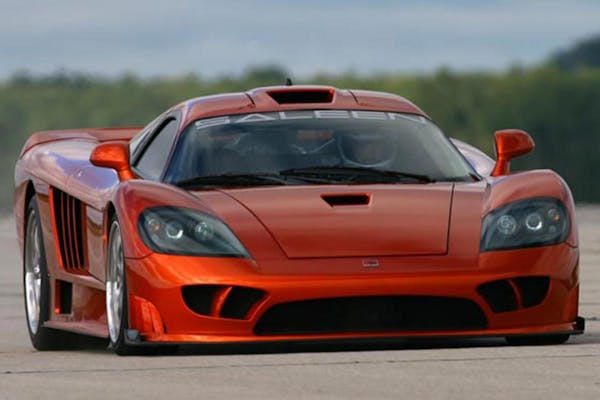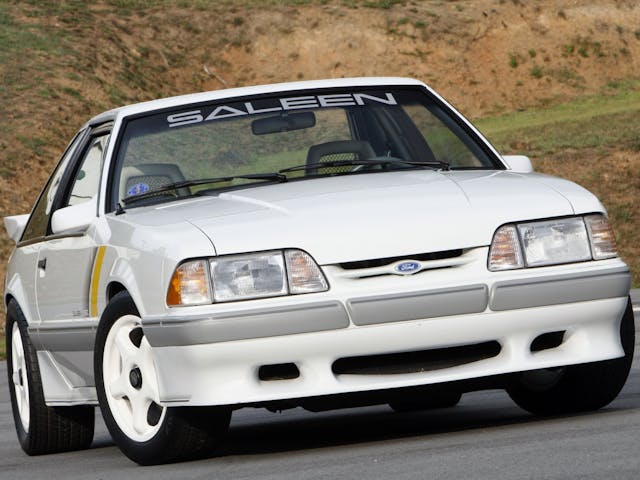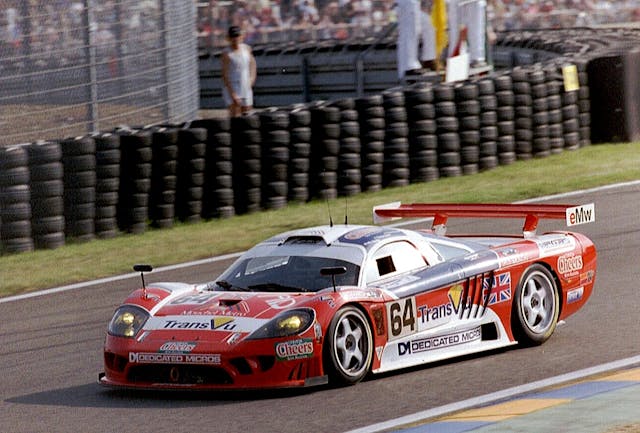Steve Saleen’s overlooked supercar is just as legit as his Mustangs

The path to building a performance car bearing your name is often indirect. While some—ahem, Ferruccio Lamborgini—start the journey due to a slight from a rival, others might be inspired by someone else’s work. Case in point, Steve Saleen, the author of the short-lived yet awesomely fast Saleen S7. Let’s take a quick look at the rise and fall of what could have been America’s supercar.
The history of the S7 traces back much than its 2000 introduction suggests. Beginning in 1984, Steve Saleen made his name as a tuner of Ford Mustangs for street and for track. He and his California shop had a real knack for marching those trained ponies to the top step of the podium, and in the late ’90s, built a few SN95 (fourth-gen, or 1994–2004) Mustangs to run the 24 Hour of Le Mans in 1997. Unfortunately, electrical and suspension issues plagued the race-prepped pony cars, and likely led Steve to spending a little more time than expected eying the long-tail McLaren F1s in the adjacent paddock spots. From there, his ambitions got out of hand fast, as outlined by a video posted by 337Speed on YouTube recently.
The S7 came together rapidly, by car development standards. At the heart was a 427-cubic-inch V-8, based on a Ford Windsor engine, mounted amidships. That big-block was fed air from a roof-mounted intake and revved to 6500 rpm to make 550 hp and 560 lb-ft of torque. The chassis into which Saleen nestled that (very true-to-form) engine was more of a group effort, involve many manufacturers and producers. It all came together, however, for the S7’s formal launch at Laguna Seca in 1999.

The press raved about the car, but more importantly, the S7 proved a far more successful endurance racer than the SN95 Mustangs. In 2004, a S7R bested a stacked GT field at Ferrari’s home track of Imola. That’s nearly out-Ferrari-ing Ferrari.

The next step for the S7 was the grafting-on of twin turbos, which reached production for the 2005 model year. The engine was still Ford Windsor–based but achieved its 427 cubic inches displacement via a different internal geometry. Saleen’s shop shrunk each cylinder bore slightly in an effort to strengthen the block by leaving more material between each moving piston. That’s a slightly puzzling move, considering that the turbocharging system lacked an intercooler, an arrangement which limited boost to just 5 psi. The move to forced induction still bumped power to 750 hp and torque to 700 lb-ft, costing only 200 additional pounds in the process. Sadly, the cost of all this development likely spelled the end for the S7.
For the 2005 model year, the list price of an S7 was $355,000, a figure which pit this upstart American against the Europe’s most prestigious brands. Even with the performance advantage, the S7 was a tough sell. Saleen had planned to sell 50 examples in 2004, but only eight found buyers. At the same time Saleen was quickly losing buyers of its Ford Mustang packages to Ford who was upping its own game with SVT and Roush packages offered through its dealers. Money ran out, and before long Steve Saleen was booted from his own company.
The S7 should be a success story, but the high-drama supercar world easily glosses over those that exit with a whimper instead of a bang. Values for the S7 have never really increased nor decreased in the 15-20 years since its introduction. Though politely looked over, the S7 belongs among Saleen’s vaunted Mustangs as an ambassador of American performance.


There are a number of super cars with no demand and low value. Many are very good cars some not so good.
In this case it is a good car but with little global appeal or decades of heritage. Salween had a racing history but the company never won Indy, F1 or Lemans.
Also with orphan cars while the engine etc may have parts easy to find the rest may or may not be. Even if they are easy due to other exotic cars it still may scare off some.
I have always admired this car and was disappointed it never earned the status it deserved.
Who knows some day this could all change as some cars come out of no where at time. The Cobra for years was just another used up sports car and then the kit car thing he’ll drive prices of the real ones to where they are at today.
I recall in school just in my area here several Cobras, 350s and a 500KR that sone kids dads had stashed but no one cared then. All are gone but one that is still hiding.